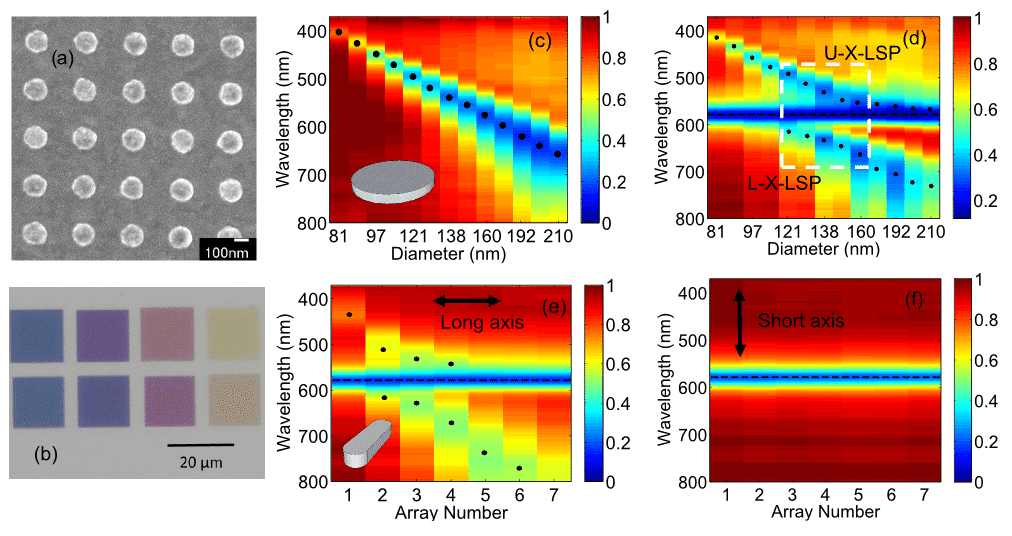
Observation of Giant Vacuum Rabi Splitting in Complexes of Aluminum Nanoantennas and J-Aggregates and Generation of Polarized Hybrid States
In recent years several works studied the formation of hybrid exciton-localized-surface-plasmon (X-LSPs) modes in various material systems [1-3], and demonstrated that these modes enable different interesting nanoscale control schemes, e.g, ultra-fast all-optical switching [4]. Up to date X-LSPs were mainly studied using silver or gold as the plasmonic material however here we demonstrate that aluminum is also well suited for strong coupling experiments and enable the generation of X-LSPs across the entire visible spectrum potentially down to the ultraviolate regime. Despite the relatively high damping rates of aluminum we observe in our experiments a giant Rabi splitting of more than 400 meV. In addition we show that the coupling of vacuum LSP flactuations with the excitons can be polarized by geometrical manipulations of the nanoantennas. This opens new possibilities to study the dynamics of strongly coupled plasmon-exciton states.
The studied samples consist of aluminum nanodisks or nanorods arrays on indium tin oxide coated glass substrate. An SEM image of one of the nanodisks arrays is shown in Figure 1(a) and an image of arrays transmission, exhibiting vivid colors can be seen in Figure 1(b). Figure 1(c) shows the transmission spectra of the nanodisks arrays. In each array, nanodisks are 40 nm high with different diameter, separated by 190 nm side to side. The samples are then spin coated with a thin layer of TDBC J-aggregating dyes in water. This leads to the emergence of hybrid X-LSP states as can be seen from the anti-crossing in the dispersion measurements shown in Figure 1(d) (nanodisks) or 1(e) (nanorods). Nanorods arrays consist of 40 nm high, 40 nm wide nanorods with different lengths, separated by 190 nm side to side at their long axis and 150 nm side to side at their short axis. As can be seen from Figure 1(f), when the shined light is polarized with the short axis of the nanorods we observe only the uncoupled J-aggregate dyes absorption.

[1] J. Bellessa et al. Phys. Rev. B 80, 033303 (2009).
[2] A. E. Schlatheret et al. Nano. Lett. 13, 3281–6 (2013).
[3 P. Chantharasupawong et al. J. Phys. Chem. C 118 (41), 23954 (2014).
[4] P. Vasa et al. ACS Nano 4, 7559–7565 (2010)
Powered by Eventact EMS